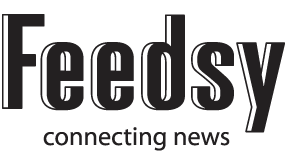The final stretch to bring inflation back to target is proving challenging, based on fresh data, though that is broadly what the Reserve Bank expected.
The Australian Bureau of Statistics’ monthly inflation indicator held steady at 3.4 per cent for a third month in a row, coming in a little softer than the 3.5 per cent consensus forecast.
The February results were mixed across the various categories, with price accelerations posted for rents, dwelling costs, transport, education and insurance.
Yet the Taylor Swift effect on prices was fairly muted, with Eras tour concerts adding to demand for hotels in the big cities but the bureau said those price hikes were not enough to offset weaker interest in holidaying elsewhere as kids went back to school.
Holiday travel and accommodation prices actually fell on an annual basis, sinking 1.3 per cent after recording a deeper 7.1 per cent decline to January.
Food inflation also moderated over the month, with outright falls for meat and seafood and fruit and vegetables, and smaller gains for bread and dairy products.
The Reserve Bank is looking for signs its series of interest rate hikes are working to suppress demand to bring inflation back within the two-three per cent target range.
Convincing progress was logged in the last half of 2023, with annual inflation lifting just 4.1 per cent in December but the central bank expects more incremental moderation going forward to have consumer prices back within target by the end of next year.
ANZ economists Madeline Dunk and Catherine Birch said the RBA would “take comfort” from the trajectory for prices, with inflation on track to undershoot March quarter forecasts.
“But there are some signs we may encounter the ‘last mile’ challenge,” they wrote in a note.
Services inflation edged up to 4.2 per cent from 3.7 per cent previously, bolstered by the likes of insurance and rents.
National Australia Bank markets economist Taylor Nugent said there was also a “glimmer of hope” for services inflation as restaurants, meals out and other personal services posted improvements.
“The RBA may latch on to as a sign of broader easing in domestic pressures but the broader services picture remains mixed,” he said.
Economists at both the big banks expect the RBA to stay on hold at 4.35 per cent for several months before starting to cut interest rates in November.
Treasurer Jim Chalmers said inflation remained at its lowest level in over two years.
“We know the monthly numbers can bounce around from month to month and are less reliable than the quarterly measure that shows annual inflation is continuing to ease,” he said on Wednesday.
Shadow Treasurer Angus Taylor said the monthly numbers proved Australians were still experiencing “extraordinary financial pain”.
He said many everyday essentials had gone up since Labor was elected, including bread, dairy, rent and electricity.
“The damage has been done to household budgets,” Mr Taylor said on Wednesday.
Stripping out volatile price changes on items such as automotive fuel, fruit and vegetables and holiday travel, the annual rise in the consumer price index to February was 3.9 per cent, down from 4.1 per cent to January.
Yet the trimmed mean inflation was 3.9 per cent in February, up slightly from 3.8 per cent in January.
Poppy Johnston
(Australian Associated Press)






